Are you a Quiet Speculation member?
If not, now is a perfect time to join up! Our powerful tools, breaking-news analysis, and exclusive Discord channel will make sure you stay up to date and ahead of the curve.
One of the biggest challenges we face in metagame analysis is understanding the importance of a Magic World Championship. These events see a mix of wild innovation and time-honored strategies, of Modern experts with years of practice, and format dabblers who are more at home in a draft or Standard. By a similar token (Thopter? Spirit? Elemental? Take your pick!), Worlds decklists both reflect the wider format while also standing alone as a tournament-specific metagame. We need to understand these factors if we are to look at Worlds 2015 and separate decks with format-wide potential from those that were picked to succeed in an insular setting.
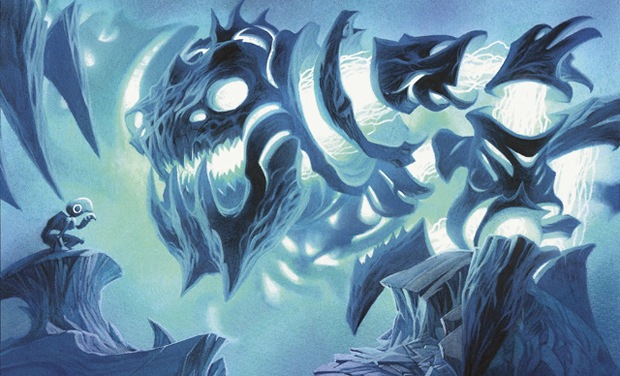
I was surprised when I saw just how little discussion Worlds 2015 generated in Modern communities, which is probably just as much a function of its odd place in the metagame as it was because of full-art fetchlands and shocklands stealing the spotlight. Today, we're going to give Worlds 2015 some well-deserved attention and look at a few strategies and cards that highlight the best and brightest innovations from the event. Whether you tuned in on the Twitch stream, followed the discussion online, or were too busy ogling the new Ulamog and Gideon, this article will fill you in on the cards and decks that mattered at Worlds 2015.
[wp_ad_camp_1]
1. Be Afraid of Affinity
If you read this section headline and think to yourself "Wait, how is that anything new?" then you're already a step ahead on understanding the most important takeaway from Worlds 2015. Affinity was the 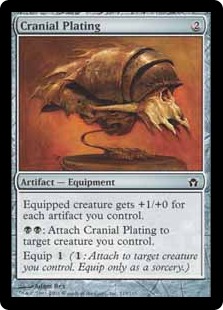 most-played deck going into Worlds, sent the most to a 3-1 record, and had the best ratio of 3-1 records to 2-2 or lower records of any other deck (poor Jacob Wilson and Mike Sigrist with 0-4 and 1-3 respectively). For anyone familiar with the deck, this shouldn't be too surprising. Affinity has always been one of the best choices in Modern, especially in unknown or unstable metagames. It's arguably the most consistent linear (even "unfair") deck in Modern, and easily the deck that most punishes unprepared players. Don't have Stony Silence in your opening hand? Didn't pack enough Ancient Grudge in the sideboard? You probably already lost game one anyway (Affinity has one of the nastiest game one win percentages in Modern), and without those sideboard bullets it's time to sign the slip and pack it off to the next match anyway. When Paulo Vitor Damo da Rosa talks about the sideboard problems of Modern, guess what deck he's talking about? Hint: it's no coincidence that Stony Silence is the headline image.
most-played deck going into Worlds, sent the most to a 3-1 record, and had the best ratio of 3-1 records to 2-2 or lower records of any other deck (poor Jacob Wilson and Mike Sigrist with 0-4 and 1-3 respectively). For anyone familiar with the deck, this shouldn't be too surprising. Affinity has always been one of the best choices in Modern, especially in unknown or unstable metagames. It's arguably the most consistent linear (even "unfair") deck in Modern, and easily the deck that most punishes unprepared players. Don't have Stony Silence in your opening hand? Didn't pack enough Ancient Grudge in the sideboard? You probably already lost game one anyway (Affinity has one of the nastiest game one win percentages in Modern), and without those sideboard bullets it's time to sign the slip and pack it off to the next match anyway. When Paulo Vitor Damo da Rosa talks about the sideboard problems of Modern, guess what deck he's talking about? Hint: it's no coincidence that Stony Silence is the headline image.
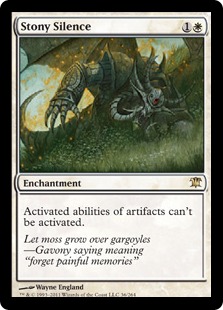 The scariest part of Affinity's finish at Worlds is that everyone knew the deck, expected it to some extent, and packed at least a few cards to handle it in their sideboards. Despite this preparation, the deck still excelled. Almost every single non-Affinity player packed at least 2-3 slots that were relevant in this matchup. Antonio del Moral Leon had Grudge, Shatterstorm, and Engineered Explosives. Eric Froehlich brought the techy Sundering Growth in his BW Tokens list with all the Living End players rolling with an Ingot Chewer trio. Stony Silence showed up in four decks too. These players all brought a reasonable amount of Affinity hate in their boards, but it was never enough to actually stop the modular menace.
The scariest part of Affinity's finish at Worlds is that everyone knew the deck, expected it to some extent, and packed at least a few cards to handle it in their sideboards. Despite this preparation, the deck still excelled. Almost every single non-Affinity player packed at least 2-3 slots that were relevant in this matchup. Antonio del Moral Leon had Grudge, Shatterstorm, and Engineered Explosives. Eric Froehlich brought the techy Sundering Growth in his BW Tokens list with all the Living End players rolling with an Ingot Chewer trio. Stony Silence showed up in four decks too. These players all brought a reasonable amount of Affinity hate in their boards, but it was never enough to actually stop the modular menace.
Going into events like GP Oklahoma City and other Grand Prix to follow you need to be more prepared for Affinity than many of the Worlds players were. I've heard Affinity called the Dredge of Modern, a deck that folds to specific hatred in a format where you don't actually want to run that specific hatred. Don't get the PVDR blues and decide to skimp on your anti-Affinity hatred because you are protesting the sideboard problems of Modern. Just run the cards and be ready, because we will see plenty of Affinity at GP Oklahoma City if for no other reason than players trying to replicate its success at Worlds. Alternately, you can gamble on other players running the hate to keep Affinity down, ditching it yourself to free up sideboard slots. I would caution you away from this: it only takes 1-2 Affinity matchups on Day 1 to ruin a GP weekend.
2. There's Always Room for Innovation
While I was brainstorming ideas for this article, Sam Pardee wrote up a nice brief on Worlds 2015 including some tech standouts like Hangarback Walker in Jund, Glen Elendra Archmage in UW Control, and Ghirapur Aether Grid in the 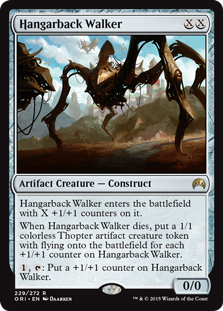 Affinity board. Of these different ideas, the Hangarback Jund one really stands out to me, even if Brad Nelson's 2-2 record isn't the most inspiring finish. Jund is one of those decks that has an established core (Tarmogoyf, Liliana of the Veil, the 3-3 or 4-2 split on Inquisition of Kozilek/Thoughtseie, etc.), with a few curve-topping flex-spots depending on the metagame and the pilot's preferences. Most decks have similar setups (Trevor Holmes does a great job of discussing the Grixis core in his Grixis Control primer), but many Modern players are often loathe to tinker too much with those slots or default to old fallbacks like Huntmaster of the Fells instead of testing new options. Worlds 2015 showed that even the most established decks like Jund have room for new and creative ideas.
Affinity board. Of these different ideas, the Hangarback Jund one really stands out to me, even if Brad Nelson's 2-2 record isn't the most inspiring finish. Jund is one of those decks that has an established core (Tarmogoyf, Liliana of the Veil, the 3-3 or 4-2 split on Inquisition of Kozilek/Thoughtseie, etc.), with a few curve-topping flex-spots depending on the metagame and the pilot's preferences. Most decks have similar setups (Trevor Holmes does a great job of discussing the Grixis core in his Grixis Control primer), but many Modern players are often loathe to tinker too much with those slots or default to old fallbacks like Huntmaster of the Fells instead of testing new options. Worlds 2015 showed that even the most established decks like Jund have room for new and creative ideas.
Take Hangarback Walker as an example. As Pardee mentions in his own article, it's a four-drop that doesn't kill you off a Confidant flip, and doesn't disappoint in multiples unlike Chandra, Pyromaster or Outpost Siege. In addition, 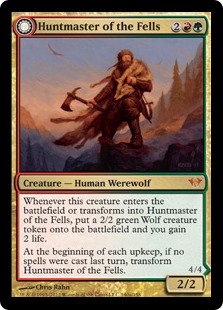 Hangarback gives you a strong lategame topdeck and manasink, functioning in some respects like the mighty Gavony Township in Abzan Company lists (and in Melira/Junk Pod lists of olden days). I'm also loving Hangarback recursion off Kolaghan's Command, which is something neither Chandra nor Siege benefit from. Unlike other creatures like Huntmaster or Olivia Voldaren, Hangarback isn't an overhyped Canyon Minotaur against the Grixis decks and their removal screen. If Grixis immediately kills the two-drop walker, you still come out a Lingering Souls ahead. If Grixis ignores it, the Walker grows and grows until out of range of both burn spells and any hope of profitable interaction. Indeed, I suspect Walker's inclusion suggests an overpreparation towards Grixis Control and similar decks and an underappreciation for Affinity and company. Overall, Hangarback represents the best in tier 1 innovation we can hope for in Modern. As we review Battle for Zendikar cards and think about GP Oklahoma City technology, we should use Hangarback Jund as one of our innovation benchmarks.
Hangarback gives you a strong lategame topdeck and manasink, functioning in some respects like the mighty Gavony Township in Abzan Company lists (and in Melira/Junk Pod lists of olden days). I'm also loving Hangarback recursion off Kolaghan's Command, which is something neither Chandra nor Siege benefit from. Unlike other creatures like Huntmaster or Olivia Voldaren, Hangarback isn't an overhyped Canyon Minotaur against the Grixis decks and their removal screen. If Grixis immediately kills the two-drop walker, you still come out a Lingering Souls ahead. If Grixis ignores it, the Walker grows and grows until out of range of both burn spells and any hope of profitable interaction. Indeed, I suspect Walker's inclusion suggests an overpreparation towards Grixis Control and similar decks and an underappreciation for Affinity and company. Overall, Hangarback represents the best in tier 1 innovation we can hope for in Modern. As we review Battle for Zendikar cards and think about GP Oklahoma City technology, we should use Hangarback Jund as one of our innovation benchmarks.
3. Metagaming Only Gets You So Far
In the weeks following Worlds 2015, you are going to hear authors call Living End or Bogles a tier 2 deck. You are going to consult sources like our Top Decks page, confirming that these decks have numbers 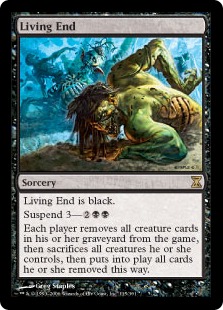 backing them up before accepting these classifications. You are not going to look at the contextless Worlds 2015 decklists and immediately assume either deck is tier 2 just because of how many representatives showed up with it. Be skeptical and don't forget "context". In both cases, Living End and Bogles were highly metagamed choices to answer specific Modern mainstays like Jund, Grixis Control, Merfolk, and Burn. Also in both cases, the metagamed choices were firmly hit-or-miss, with some players going the 4-0 distance (Martin Muller on Living End) and others falling flat on identical lists (all three other Living End players with their 2-2 records). In the end, it was Affinity, the format regular, which had big success at Worlds, not the metagamed decks designed to address a specific set of matchups. If this strategy didn't necessarily succeed at Worlds, you can bet it will be even shakier in a less insular metagame like an SCG Premier IQ or a Grand Prix.
backing them up before accepting these classifications. You are not going to look at the contextless Worlds 2015 decklists and immediately assume either deck is tier 2 just because of how many representatives showed up with it. Be skeptical and don't forget "context". In both cases, Living End and Bogles were highly metagamed choices to answer specific Modern mainstays like Jund, Grixis Control, Merfolk, and Burn. Also in both cases, the metagamed choices were firmly hit-or-miss, with some players going the 4-0 distance (Martin Muller on Living End) and others falling flat on identical lists (all three other Living End players with their 2-2 records). In the end, it was Affinity, the format regular, which had big success at Worlds, not the metagamed decks designed to address a specific set of matchups. If this strategy didn't necessarily succeed at Worlds, you can bet it will be even shakier in a less insular metagame like an SCG Premier IQ or a Grand Prix.
You've probably heard the old Modern adage about "playing what you know", instead of "playing what is best". This doesn't mean you should play Tribal Treefolk or Duskmantle Guildmage/Mindcrank Combo because those are the decks you 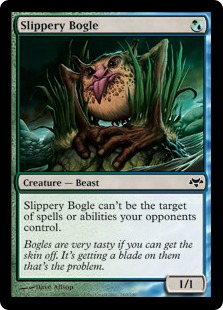 "know". It also, however, doesn't mean you should switch to an under-tiered, niche deck like Soul Sisters because you fear Burn. You want to play a deck you are experienced in, but also a tiered deck with enough competitive successes to suggest it's a viable contender in Modern. This is one reason linear/unfair decks tend to do so well in Modern: Infect's strategy in the Jund matchup (poison you to death) is basically the same as in the Affinity one (poison you to death...but faster). This doesn't mean you always want to play a linear/unfair deck just to try and ignore metagame context. Sometimes the best decks in metagames are the interactive ones because the uninteractive ones are too predictable or similar. This is where the choice to play a deck like Living End or Bogles can get you in trouble. None of this is to second-guess the testing of those players who ended up on these builds, which I know was extensive and well-reasoned. It's just to warn you as a reader to be careful of this approach in larger, unpredictable events when it doesn't always work out in smaller, more predictable events like Worlds 2015.
"know". It also, however, doesn't mean you should switch to an under-tiered, niche deck like Soul Sisters because you fear Burn. You want to play a deck you are experienced in, but also a tiered deck with enough competitive successes to suggest it's a viable contender in Modern. This is one reason linear/unfair decks tend to do so well in Modern: Infect's strategy in the Jund matchup (poison you to death) is basically the same as in the Affinity one (poison you to death...but faster). This doesn't mean you always want to play a linear/unfair deck just to try and ignore metagame context. Sometimes the best decks in metagames are the interactive ones because the uninteractive ones are too predictable or similar. This is where the choice to play a deck like Living End or Bogles can get you in trouble. None of this is to second-guess the testing of those players who ended up on these builds, which I know was extensive and well-reasoned. It's just to warn you as a reader to be careful of this approach in larger, unpredictable events when it doesn't always work out in smaller, more predictable events like Worlds 2015.
Worlds 2015 Wrap Up
There's only so much we can read into a Worlds metagame. Because of how teams prepare and test together, the metagme is often significantly more isolated (even inbred) than we are likely to see in a regional or even a local event. I like to think of Worlds as a high-skilled FNM, at least when considering deck choice. With only three Twin decks, a single Jund and Burn, and zero Grixis Control, we can't call Worlds 2015 a representative Modern metagame, at least not with a straight face. That said, we still need to read signals from the event to see how other players will interpret its results. That's where Worlds starts to become relevant outside of those 16 players, and that's how you are going to prepare yourself for upcoming GPs.
What were some other cards and decks you got excited by at Worlds? I loved Yuuya Watanabe's UW Control deck, although I'm sure there's a contingent of Moderners out there who will call it UW Midrange just to make control fans sad. Any big breakout Worlds performances I missed? How are you going to use the event to prepare for upcoming events? Take it to the comments and I'll see you next week for more exciting metagame discussion.




I think you mean new Ulamog rather than new Ugin
All those pesky U names. Fixed!
hi! i am new to Magic and i have only recently started to make a modern Burn deck. can you please make an article about your thoughts regarding the impact of the new dual lands from Battle for Zendikar on Modern? thanks!
That would be a very short article.
“unplayable. no impact”.
I cannot think of any deck that would want these since the whole point of playing fetch/dual is to get your required mana available as soon as you need it. Going basic-basic-fetch is not going to reliably do this for many decks, not to mention the risk you open a hand of fetchland, new dual, new dual… so you fetch a basic and then play 2 lands into play tapped? no thanks.
If they had been 2 lands period we might have had something interesting, but the fact that you not only need 2 lands but two BASIC lands means these have no obvious place in modern. Maybe, and this is a massive maybe, in a deck splashing a 2nd colour for a late game play, and I’m still pretty sure you’d be better off with the equivalent shockland so that you can curve out if its in your opener.
You seem to have missed the point of these lands entirely. They are designed with two-colour decks in mind, opposite to Modern’s usual three- or one-colour dominating lists. They work best, however, in mono-coloured decks that splash for either sideboard cards or a few maindecks. Things like Merfolk that already play a vast number of basics will be very happy to have essentially “free” duals for black, red or whathaveyou sideboard answers.
In addition to that, the most basic line of play you see in any Modern game is fetch->shock, right? Well have you noticed that the majority of fetching happens end-of-turn to avoid the shocking? Guess what, when you do that with these lands, it’s the same! Absolutely no difference.
Now, of course, to be fair, the shocks are way better in a vacuum, able to be played untapped on curve and all that. With all of this in mind, nobody is talking about the new duals to be as good as them, rather “occasionally just as good” and in a few corner cases that have really needed attention in Magic, such as splashing in a mono-coloured deck, they might even be better.
Except for that part where Mono-Colour decks don’t run fetchlands and definitely wouldn’t want to see 2 of these in their opener.
Merfolk won’t run these because they are looking for Choke protection and not to splash colours.
There are some two-colored decks that will likely use them, but those two-colored decks are underplayed in Modern to begin with. It’s not like these new lands will suddenly be the enabler UW Control, BG Rock, Deadguy Ale, or other decks have been looking for. I do think they are more playable than a lot of people give credit, especially in grindy matchups or metagames where you want to keep up mana development past turns 4-5 but don’t want to keep taking incremental damage. Fetchability is still very strong, so I see them showing up as 1 or 2-ofs in various decks.
Hi!
At this “professional FNM” Shoun Mclaren played very intresting UR pyromancer deck. Do you think this deck will be more popular? What’s it’s place in the meta? Was it only one-time deck dedicated to meta or it has chance to being rly competetive :D? Thanks for answer!
I really love this kind of UR Deck, but it really misses Delver in my opinion. You seen the importance in the match against UW Control from Watanabe, he was the beatdown but have nothing really to beat with. An unanswered Delver would destroy UW or would eat a path and give you an extra land, which is really good against control.
We can talk about a new UR Delver style with more control elements and less removel than Grixis Delver, but Delverless UR without Twin is not really possible for the lack of resilient creatures and removel.
That deck seems very much like a Blue Moon deck we’ve seen in past metagames (I believe it was Jeff Hoogland who innovated a Temur Moon splash in early 2015). From a metagame perspective, these styles of decks have almost been completely overtaken by Grixis decks, and I don’t see that changing now. UR Pyromancer seems like a worse UR Twin to me. They both have the blue-red controlling options, but the threat of a Twin win at instant-speed buys significantly more tempo than a little Pyromancer and his 1/1 army. You could also view it as a worse Grixis Control because you lose the Plan B of Angler/Tasigur (and the board presence more generally, even if not used as a win condition). I see reasons to run this over UR Delver in cheap-removal-heavy metagames, but overall I think this is a metagame call deck that we won’t see again, in the same history as the Eternal Command deck from Worlds 2012.
So is Affinity a problem in modern?
Short answer: no.
Longer answer: Even at its least fair, Affinity never totally dominates a format. It definitely wins games and tournaments, but never for lasting periods of time and never in the face of too much hatred. It’s not like Pod or TC-Delver decks, which were actively reducing metagame diversity and excluding other options from the metagame. Affinity has never cracked 10% of the metagame for longer than a month or two, which is not where we would expect a problematic deck to be.
I rarely see any discussion about BW tokens, even when it pops up in events like this. What are your opinions on the deck, and what do you think is holding it back in modern?
I recently talked about this in an email to another user (might even have been you, but I don’t have the email onhand). The biggest problem with BW Tokens is its lack of powerful spells. There’s no Snapcaster, no Angler/Goyf/Tasigur, and definitely no Twin, Plating, Wurmcoil, etc. There’s not even a topdecked Chord or Company. This leads to situations where you can gradually build up advantages so long as you keep the disruption flowing to keep an opponent off balance, but not to situations where you can just explode from behind. The closest card to this is Sorin, who can lifelink your team and instantly turn a game around on turn four, but that’s only relevant in a few matchups. Another way to think of it: BW Tokens often feels TOO fair.
You’re right, I just looked it up and we had spoken about Tokens in the context of the article on how to beat Abzan. I had completely forgotten about that. Thanks for responding again!